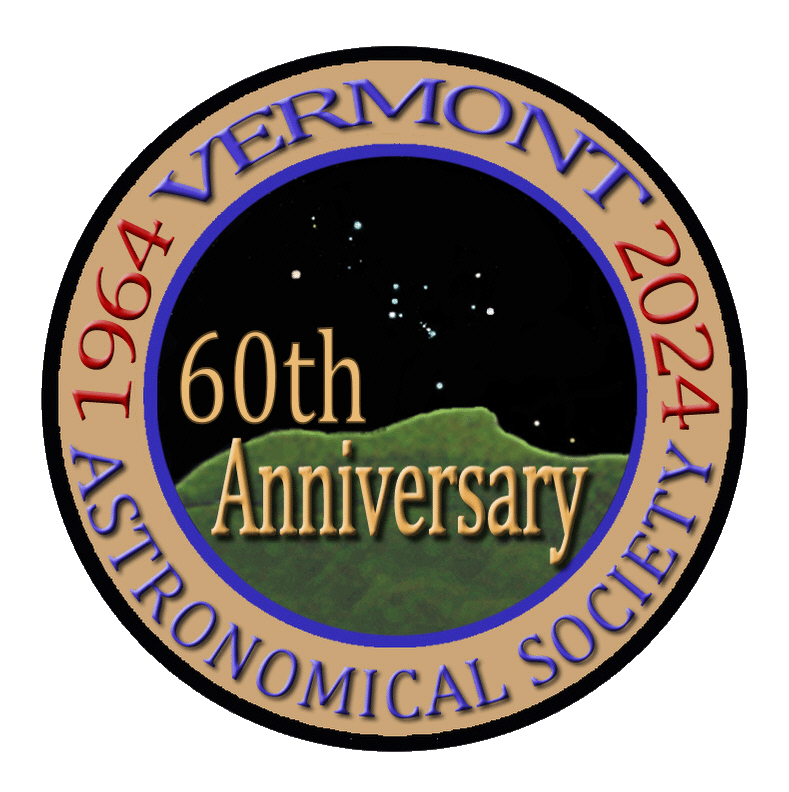Review by Paul Walker
I had seen these binoculars advertised in Sky & Telescope for a while and was curious how well they work. However, they seemed kind of specialize so I was not in a hurry to buy them. Besides I seldom use the binoculars I have. Luckily Dennis bought a pair last Fall and brought them to a monthly meeting. I tried them out briefly from light polluted Essex Jct. Looked at few constellations and the first quarter Moon.
It peaked my interest enough to buy a pair. Well, actually my wife asked if I would like them for Christmas and I said yes. So I bought them (she had already bought her Christmas present so it was a wash). I also bought the 2” adapters for attaching nebula filters to the front.
I have used them a few times. Once going up to Dennis’s to compare his and my pair and to attach nebula filters to one (I don’t have 2 of the same filters but between the 2 of us we do). The 2 binoculars tested out the same, we could not tell any difference between them. The field of view is great. Dennis and I could both get 20 degree fields of view. They are advertised as 28 degrees, but that is for young eyes with 7 mm pupils. Based on that, 20 degrees calculates out to 5 mm exit pupils. About right for older folks like us.
Their web site clearly states that the true field of view is limited by the exit pupil of your eye and to get the maximum view you must get your eye as close to the eyepieces as possible. This is because the have Galilean optics, which they also clearly state and describe. Twenty degrees is wide enough to see the whole of Orion, Auriga, Gemini and many more constellation. Typical 7×50 binos only have a field view of 7or 8 degrees, 10×50’s only about 5 degrees. Only 1/3 and ¼ the field of these binos. I can hardly wait to scan the summer Milkyway with them, both with and without filters.
I was kind of expecting to see more stars than I did. If I had read the site more carefully I would not have expected this. They claim 1 to 2 magnitude gain for the faintest stars visible versus the eye alone. I did some limiting mag testing. On a typical night at my house I can see 5.3 magnitude stars near Polaris fairly readily, 5.6 if really good night. With the these binos I found 5.9, 6.1, 6.25 to be readily visible. 6.5 and 6.65 less so. The faintest star I detected was 7.3. So the magnitude improvement for me was more than 1 magnitude maybe as much as 1.5 . Of course it depends on which stars one looks at and how accuracy the source info is. I used some stars in and around the “kids” in Auriga and near the 2 western belt stars in Orion and Starry Night Pro as my source.
Because the magnification is so low, on stars, we are not going to get nearly to the theoretical limit for a 40 mm objective. Found a web site that calculated 6.7. Also small open star clusters and most globular cluster are hard to make out. However, on sufficiently large extended objects we should see an improvement more in line with the 40 mm.
I don’t have astigmatism but based on Dennis’s input (he has some) the low magnification may minimize any issues that astigmatism normally causes. Which is good because you can’t wear glasses when using these binos. For me the stars are fairly sharp though all are “spiky”. Similar to viewing with the unaided eye.
Focusing is a bit tricky, mostly I think, because the position on eye behind the eyepieces affects focus. The process I found worked: Adjust the inter-pupillary distance, focus one side, focus the other side, check your eye position on each side, adjust inter-pupillary distance if needed, refocus. I noticed for a while I kept having to refocus the left side (but not the right side). I think the issue was that I wasn’t keeping the left eye properly positioned.
The process of buying them was a little funky. They have a web site and I bought them directly from Kasai Trading Co. But they are not set up to receive orders via the web. You send an email to them with want you want to buy. They email you back with the total price in Yen. You can pay via Pay Pal or direct money wire. If you pay via Pay Pal, you log onto you account and send the payment in Yen to their Pay Pal account.
Now that I have pair of these binoculars, I can hardly wait until the next large bright comet appears. These binos should provide a breathtaking view.
KASAI TRADING CO. OF JAPAN
Price: 15,000 Yen ($135)
Clear Aperture: 40mm
Power: 2.3x
Field of View: 28-degree (requires your pupils to dilate 7mm , “only” 20 degree field if your pupils only dilate 5mm )
Interpupillary Distance: 52mm – 73mm
Diopter Range to focus infinity > -6 diopter
Standard Accessores: Front & Rear Dustcovers, Neckstrap, Soft Carrying Case
Additional Accessories: 2 filter adaptor rings, 3,800 Yen ($34), – Wide Bino Goggles for 8,000 Yen ($72)
They also have a few Crayford type focusers and a 6” f/5 travel scope for $683 among a few other items.
